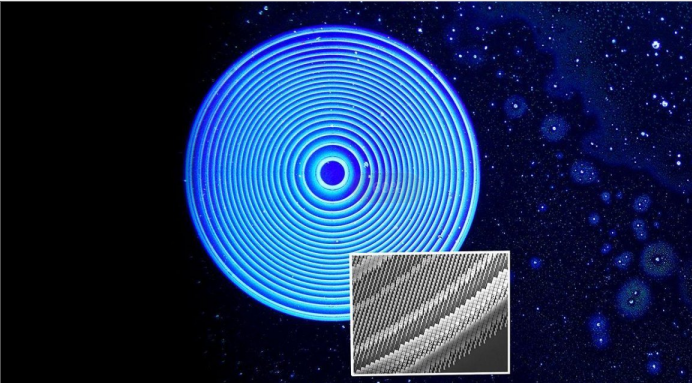"Lens" is the Latin word for lentil. And it is indeed true that the shape of biconvex lenses—
“Lens”是拉丁詞小扁豆的意思。雙凸透鏡的形狀確實(shí)如此—
the familiar sort used as magnifying glasses—resembles those leguminous seeds.
放大鏡常用的一種鏡片—它們和那些豆科種子很相似。
But that resemblance may soon be a thing of the past.
但這種相似性可能很快就會(huì)成為過(guò)去。
For a group of engineers at Columbia University, in New York, led by Nanfang Yu,
因?yàn)榧~約哥倫比亞大學(xué)一支由虞南方帶領(lǐng)的團(tuán)隊(duì)
has worked out how to make magnifying lenses that are flat, and thinner than a hair.
發(fā)明了一種平的、比頭發(fā)還細(xì)的放大透鏡。
A lens works by slowing down a light wave as it traverses one of the lens's faces
這種透鏡的工作原理是當(dāng)光波穿過(guò)透鏡的一面時(shí),使其速度慢下來(lái)
(the speed of light in glass is about two-thirds of that in air).
(玻璃中的光速大約是空氣中的三分之二)。
Slowing a wave changes its direction, a process called refraction.
放慢光波改變了其方向,這個(gè)過(guò)程被稱為折射。
The angle through which it is refracted depends on its angle of incidence to the refracting surface—
它被折射的角度取決于它與折射表面的入射角—
an angle that, on a curved surface, varies continuously. When the light leaves the lens it picks up speed again,
這是一種在曲面上連續(xù)變化的角。當(dāng)光離開(kāi)透鏡時(shí),它又加快速度,

and thus goes through a second refraction. The trick of the lensmaker's art is to grind the two surfaces into such shapes
然后經(jīng)過(guò)第二次折射。制鏡師的技巧是把兩個(gè)表面磨成這樣的形狀,
that the sum of all this refraction brings the light passing through the lens to a focus.
讓所有這些折射的總和帶著穿過(guò)透鏡的光線聚焦在一起。
Dr Yu's flat lens achieves a similar result in a different way.
虞博士的平面透鏡以一種不同的方式獲得了類似的結(jié)果。
Instead of holding the change of speed constant while varying the angle of incidence,
新透鏡沒(méi)有在改變?nèi)肷浣堑耐瑫r(shí)保持速率常數(shù)不變
the new lens holds the angle of incidence constant while varying the amount that the speed changes on different parts of the lens.
而是在改變透鏡不同部位的速度變化量的同時(shí),保持入射角常數(shù)。
It can do this because its surface is covered with millions of tiny antennae.
透鏡能做到這一點(diǎn)是因?yàn)樗谋砻娓采w著數(shù)百萬(wàn)個(gè)微小的天線。
These antennae are of different designs, each with a cross section smaller than the average wavelength of the light it is interacting with,
這些天線的設(shè)計(jì)各不相同,每一個(gè)的橫截面都一個(gè)小于與之相互作用的光的平均波長(zhǎng),
and are arranged in concentric circles. The antennae scatter the light falling on them in such a way that,
并且呈同心圓排列。天線將落在自己身上的光散開(kāi),
when the individual changes are added up,
當(dāng)個(gè)體變化疊加時(shí),
the combined effect is the same as if different parts of the beam had passed through the lens at different speeds.
這種組合效果就像光線的不同部分以不同的速度穿過(guò)透鏡一樣。
Dr Yu is not the first person to make a lens in this way, but previous efforts worked only with single colours,
虞博士不是用這種方式制作透鏡的第一人,但之前的努力只適用于單一顏色,
and also required the light to be polarised. Dr Yu's lens works with all colours and in natural light, which is unpolarised.
并且還需要對(duì)光線進(jìn)行極化。虞博士的透鏡適用于所有顏色并在在沒(méi)有極化的自然光線也能工作。
譯文由可可原創(chuàng),僅供學(xué)習(xí)交流使用,未經(jīng)許可請(qǐng)勿轉(zhuǎn)載。












